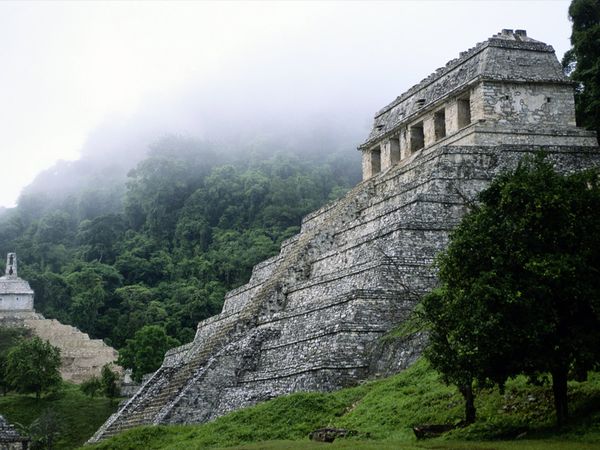In the fascinating field of Mexican archaeology, there are constant new discoveries being made, which in turn lead to new questions.
For example, INAH (Instituto Nacional de Antropología e Historia), the Mexican federal department in charge of archaeology, announced a new find at the Mayan site of Palenque, in the state of Chiapas. What they found was an underground channel for water located under the Temple of the Inscriptions.
Why? Well, as it turns out there’s a possible answer.
Before dealing with that, a little background is in order, regarding Pacal, the tomb, and the Maya culture in general.
The Maya were (and are) an indigenous culture dwelling in eastern Mexico and western Central America. They flourished in pre-Hispanic times, constructing many temples, pyramids and other structures, as well as having utilizing a complex writing system.
The Maya ruins are very impressive. I’ve been able to visit the Maya archaeological sites of Chichen Itza, Coba, Tulum, and El Rey in Mexico; and Lamanai in Belize.
Pacal the Great was the ruler of the city of Palenque, and you may see Pacal referred to in different ways in literature as “Pacal,” “Pakal,” “K’inich Janaab Pakal I,” “8 Ahau” or “Sun Shield.”
Pacal the Great was born in 603 A.D., and he officially became ruler of Palenque at the age of 12, in 615 A.D. Pacal ruled for an impressive 68 years until his death in 683 A.D.
(For historical comparison, during this same century England was being Christianized and the Islamic religion was emerging in the Middle East.)
Pacal the Great’s reign was a time of expansion of Palenque’s territory, and he oversaw much construction in the city of Palenque, now a major tourist attraction.
Pacal’s burial is quite noteworthy as well, as the ruler was buried in Palenque’s Temple of the Inscriptions, which has the longest known intact Maya inscription on it, thus the name. (Information in these inscriptions was evidence against the Maya calendar hysteria of several years ago, see here.)
The tomb had been sealed off with a stone slab. Inside the sarcophagus was an enormous coffin, in which the ruler was buried with a jade mask on his face.
There has been some dispute over the actual skeleton in the sarcophagus. The tomb inscriptions say it is Pacal, but analysis of the teeth indicated an individual of about forty years of age while Pacal would have been eighty. On the other hand, another explanation holds that it is indeed the skeleton of an 80-year old Pacal, but his aristocratic life would have allowed him to eat a diet which would not have worn down his teeth so much.
(In the Museum of Anthropology in Mexico City there is a replica of Pacal’s tomb, built to the same specifications of the original.)
Now, as for the recently announced discovery, it was made possible through the reading of Maya writing. Later, a camera mounted on a robot was used to investigate. What they found was a system of channels.
Mexico’s Excelsior describes it as “the recent discovery of a system of channels in the subsoil of the Temple of the Inscriptions. It also runs by the burial chamber of the ruler of Palenque” (that is, Pacal the Great). Apparently it doesn’t exactly connect with the tomb.
The director of the Palenque project is Arnoldo Gonzalez Cruz, who has a possible explanation for the channel system.
Gonzalez Cruz thinks that the channel system could be near the tomb to represent the route that Pacal’s subjects believed would take their deceased ruler to the waters of the underworld.
Furthermore, it appears to be related to hieroglyphics on the Temple of the Inscriptions, which possibly refer to a spring and symbolic route to the underworld.
Director Gonzalez thinks that the system of channels must have been designed before the pyramid itself. That seems logical. It appears they constructed the temple on top of a spring. That provided the water supply which was channeled through the system and emerged out in front of the temple.
NOTE: I was recently the guest of Silvio Canto, Jr., on his Canto Talk show. We discussed my recent trip to Mexico, Mexican politics, Mexican toll roads, and Donald Trump as viewed in the Mexican media. You can listen to the interview here.
By Allan Wall for TYT
——————————
Allan Wall, an educator, resided in Mexico for many years. His website is located at http://www.allanwall.info.




